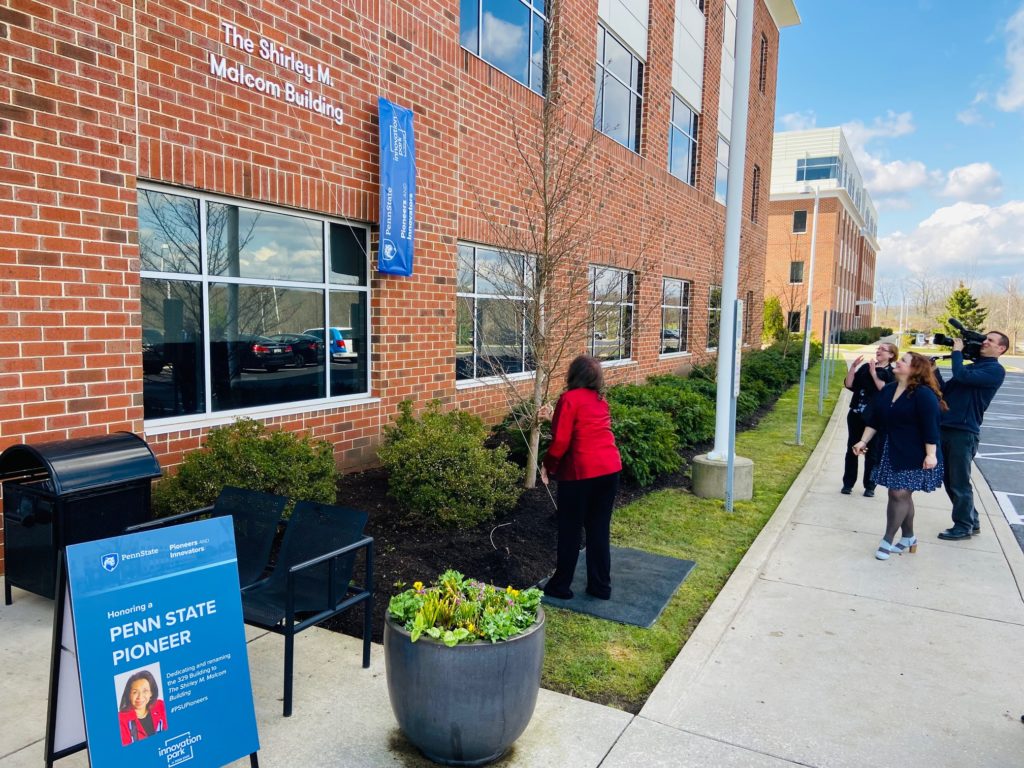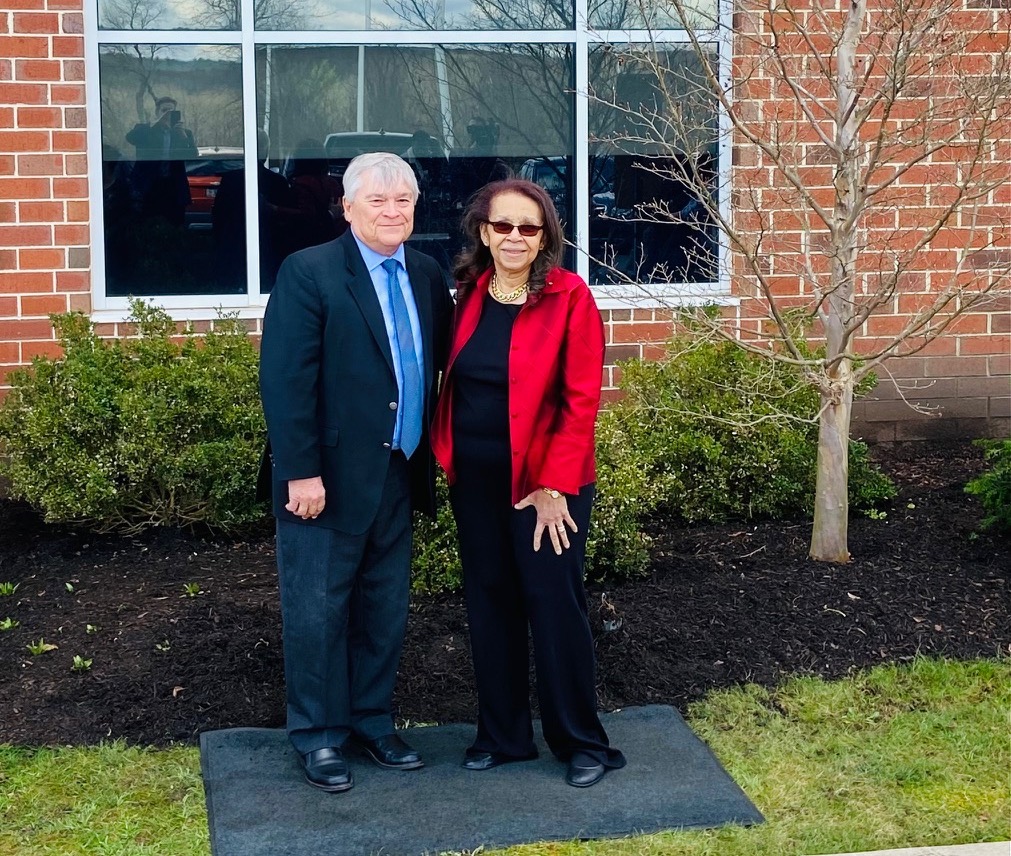Shirley Malcom didn’t see many people who looked like her when she began her pursuit of a career in science.
As young Black woman who grew up in segregated Birmingham, Alabama, she was one of only a few Black students when she attended the University of Washington and UCLA to earn bachelor’s and masters degrees in zoology, and when she arrived at Penn State to begin her Ph.D. program in ecology.
Inspired by both the space race and the Civil Rights movement, Malcom has since spent her career being an example of success and an advocate who has opened doors for women of color in the sciences through research, leadership and policy work.
Penn State honored her pioneering achievements during a ceremony on Friday by renaming the former 329 Building at Innovation Park as the Shirley M. Malcom Building.
“I want everyone to realize I do not consider this to be about me,” Malcom said. “I believe it represents something much bigger: the need for women to be their authentic selves while also finding their places in inclusive science and engineering communities.”

When Malcom came to Penn State as doctoral student for what was then a new Ph.D. program in ecology, she says she didn’t think much about who the buildings were named after or what those people had done. “I just wanted to know where the buildings were,” she said.
But on Friday she said she hopes the buildings serve as symbols of hope and opportunity.
“The work that goes on here at Penn State in these buildings helps affirm the dreams of students who are searching for their place in science, the opportunity to explore and discover, to invent and to heal, the opportunities of faculty to build the next generation of explorers, dreamers, discoverers, inventors and healers who truly look like America.”
After earning her doctorate, Malcom spent a brief tenure at UNC-Wilmington, where she became “someone I had never seen: a Black woman faculty member.” Her office became a campus destination for students of color, especially women.
“For them I imagine I was an existence proof,” she said.
Moving to Washington, D.C., with her husband, Horace, whom she met in line for registration on her first day at Penn State, Malcom started work as a researcher at the American Association for the Advancement of Science.
In 1976, she co-authored the landmark report, “The Double Bind: The Price of Being a Minority Woman in Science,” which brought attention to the challenges facing Black women in the sciences.
“I had always thought that I was the only because I had gone to the wrong institutions. The national numbers showed me otherwise,” she said. “…Over the subsequent years I experienced firsthand systemic challenges to inclusion everywhere at every level of education at the schools and in larger society.”
Throughout her 45-year career she has been an advocate for women and Black women in the sciences. She was appointed by President Bill Clinton to the National Science Board, which oversees policies for the National Science Foundation and was awarded the Public Welfare Medal, the greatest honor given by the National Academy of Sciences to leaders who use science for the public good.
Today, she works at the AAAS as senior advisor to the CEO and director of the SEA Change program, which, aims to guide and support “voluntary transformation of science, technology, engineering, mathematics and medicine fields in colleges and universities so the community-building, work, products, and practitioners exemplify excellence, equity, diversity and inclusion.”
Her years of work to break down barriers have made her an inspiration, Penn State President Eric Barron said.
“For more than four decades, she’s been a tremendous leader, a visionary scientist, an advocate for inclusion and an inspiration for women and women of color,” he said.
Tracy Langkilde, dean of Penn State’s Eberly College of Science, called Malcom a “role model” not only for her but countless others.
“She inspires tens of thousands of women and girls across the country and she has inspired thousands of us right here during her visits to Penn State,” Langkilde said.
One of those is Destiny Wright, a Penn State biology student from Chicago who will graduate this year. She said that she sometimes felt unwelcome in the scientific field when she would see pictures or enter a lab where no one looked like her. And it took a long time for her to find mentors and role models, something she found in Malcom.
“She represents a beacon of hope on an unfamiliar path…,” Wright said. “Even today, minorities struggle to take that first step, to walk inside that classroom or research lab, go down that unfamiliar path and stay on it until we succeed. Dr. Malcom refused to allow society to define her, to fall victim to the stereotypical idea that minorities were incapable of succeeding. Dr. Malcom took that step and then some.”

The Shirley M. Malcom Building is the third in program instituted by Barron to name Innovation Park facilities in honor of Penn State alumni who are pioneers and innovators. Previous honorees are Warren M. Washington, a pioneering climate scientist whose name now adorns the former 328 Innovation Boulevard Building, and Guion Bluford, who was the first African American astronaut to travel into space and was honored with the renaming of 230 Innovation Boulevard last fall.
Tracey Huston, Penn State vice president for Outreach, said Malcom was a natural choice to honor.
“Her story, her resilience, her tenacity, career, leadership, commitment to translating evidence-based science to diverse audiences, it just seemed to align perfectly with the program criteria and all the we strive for in Outreach,” Huston said.



